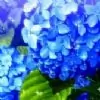This painting forms the right side of a double composition depicting one of the most dramatic adventures in Akbar's life. The left side is IS.2:22-1896. Elephant fighting was a favourite sport of the court, and one in which Akbar loved to participate. On this occasion in 1561, the emperor chose to ride Hawa'i, known for his difficult character and bad temper, against another royal elephant named Ran Bagha. The concerned onlookers summoned the Prime Minister, Ataga Khan, to try and make the emperor stop. When Ataga Khan arrived, he was horrified at the danger in which Akbar had put himself, and the text records that the Prime Minister and all those around him, great and small', raised their hands in entreaty to God to preserve the emperor, as depicted here(the man in center is Atagah praying for Akbar's safety).
Seeing that the lionhearted King of Kings' was determined to continue, Ataga Khan hid his anxiety. Eventually, Ran Bagha fled, energetically pursued by his opponent and royal rider. When they reached the river Yamuna, both elephants lumbered onto a bridge of boats which lurched up and down beneath their combined weight, making those on the bridge dive into the river for safety, as depicted in the left-hand page. Finally, the emperor managed to restrain Hawa'i, who was like fire in disposition and like wind in swiftness'. The drama of the scene is emphasised by the turbulent water and the elephant breaking out of the frame of the composition, rather than by facial expressions, which are rare in Mughal manuscript illustration. Instead, concern, awe and fear are conveyed by means of the standard gesture of Iranian painting, in which onlookers lightly press a finger to the lips.
The double composition was designed by Basawan, and Chatra completed the painting of this page.
The depicted scene celebrates Akbar's bravery and masterfulness. The painting portrays an episode in Akbar's life when he pitted two elephants against each other. The rampaging huge beasts, in full flight, are seen careering across and almost collapsing a pontoon bridge which rested and was supported by a flotilla of small boats. It is a story of Akbar, portrayed as a brave young emperor, who has mounted the ferocious elephant known as Hawa'i and the two of them battle it out with another large and terrifying creature, the elephant, Ran Bagha. Although being asked to stop this dangerous ride, Akbar ignores the warnings and continues with no care for his own personal safety. The rogue elephant, Ran Bagha is finally defeated and is being chased off across a rickety pontoon bridge of boats, which straddles the River Jumna, towards Agra Fort by Akbar and Hawa'i.
It is a scene of total chaos. We see the pontoon bridge almost collapsing under the weight of the two wildly charging elephants. A man, with an unwound turban lying at his side, is seen prone on the ground having been trampled underfoot. In the foreground we see men in the water desperately trying to steady the collapsing pontoon bridge. On the other side of the bridge we catch a glimpse of fisherman in their boat frantically trying to get to the shore in the turbulent waters caused by the violent movement of the pontoon bridge. The size of the figures in the distance help to give a depth to the painting, and the artists, through the use of his vibrant colours and two strong diagonal lines: the bridge and the shore, have effectively added energy to the painting. I like the way in which the artist has spent time on the detail of all the characters in this painting. The elephants are seen as being wild and charging but the evil one is defeated and forced to retreat whilst Akbar controls his animal and this portrayal symbolises Akbar's perception of his rule: a steady power over an unruly populace.
Edited by myviewprem - 12 years ago

































